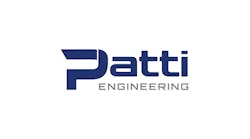Sensors and I/O deliver the data for control, but the human-machine interface (HMI) is the lens it passes through for users to optimize processes. The expanding role of supervisory control and data acquisition (SCADA) software and services was again demonstrated by the many user presentations delivered at Inductive Automation's Ignition Community Conference 2019 on Sept. 17-19 in Folsom, Calif.
"Our story begins with a frustrated system integrator, namely me, who wanted to find commercial, off-the-shelf (COTS) SCADA software, so I didn't have to do one-off projects that were costly and time-consuming," said Steve Hechtman, CEO, president and founder, Inductive Automation, during his keynote address, kicking off ICC 2019. "My customers were making reasonable requests for cost-effective SCADA solutions, but we weren't satisfied with the software available, and realized we had to develop it. What we created exceeded our expectations because our Ignition software could solve problems an order of magnitude faster. This let us say 'yes' to more projects, and achieve close to a 100% close rate after that. Now, I live vicariously through all the SCADA projects that our Ignition community creates."
Most recently, Inductive released Ignition 8 in April, which includes its Ignition Perspective web-based mobile solution for industrial applications. Many of the capabilities Ignition added over the years are driven by user feedback, and on Hechtman's core principles that they be easy, fun and affordable. "We had 1,000 beta program users for Ignition 8, and in the six months since its release, we've added 600 adjustments and improvements based on user feedback, such as making Ignition Perspective even more responsive," says Kevin McClusky, co-director of sales engineering.
The process applications enhanced by Ignition software and highlighted at ICC 2019 include:
- Oil and gas midstream marketing and logistics provider ARB Midstream worked with INS Services to develop a SCADA system for a newly acquired pipeline in just four months. The asset included 35 RTUs and central gathering locations, 10,000 tags and 3,500 alarms, and required 12 overview screens plus one per site for a total of 115. They built a web-based SCADA solution with cloud-based reporting, management, visibility, control and communications with failover capabilities and store-and-forward technologies. It included Ignition Pro software hosted on Amazon Web Services, Moxa UC8100 computer with Ignition Edge MQTT, and Cradlepoint Netcloud Perimeter SD-WAN.
- Corso Systems and SCS Engineers partnered to develop a pilot visualization and control system for the Sam Timoteo Landfill maintained by San Barnardino County, Calif., which operates 28 landfill gas (LFG) systems. The pilot had 240 tag and nine alarms, and they used SCS Remote Monitoring and Control (SCS RMC) to implement upgrades; employ a flexible, scalable platform including Ignition 8 and Ignition Perspective for desktop or mobile data access; and integrate next-generation options such as 3D imaging from drones and virtual reality (VR).
- H2O Innovation and Automation Station partnered to display data for close to 14,000 tags and 1,000 alarms on 36 screens for the first membrane bioreactor wastewater treatment plant in Decatur, Ark. Using Ignition, H2O Innovation and Automation Station upgraded the existing indicator light-board and push-button panels to a SCADA application, and added local control to multiple automation systems, real-time trending, reporting, and a data historian.
- Streamline Innovations uses Ignition to display data from 400 tags on 20 large screens and 25 mobile interfaces, and to optimize its natural gas treating units in Texas that convert hydrogen sulfide (H2S) into fertilizer-grade sulfur. Streamline is using Ignition as part if its Valkyrie process to automate three semi-autonomous, mid-sized units, one large-scale gas treatment facility, and several fully autonomous skids, all with full remote bidirectional control and historian data collection.



